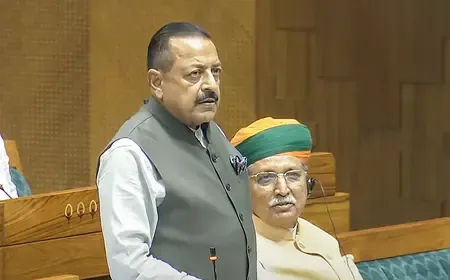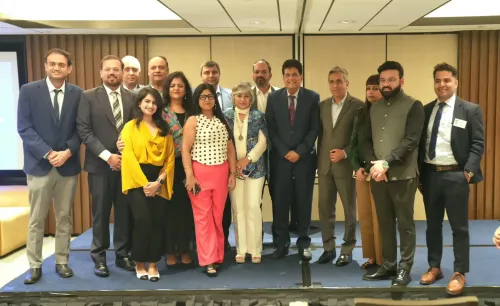Has India Reached a New Milestone with 5,000-Metre Deep Dive in the Indo-French Ocean Mission?

Synopsis
Key Takeaways
- Successful 5,000-metre dive in the Atlantic Ocean.
- Part of the MATSYA 6000 project, India’s first indigenous deep-sea submersible.
- Collaboration with France under the Deep Ocean Mission.
- Reinforces India’s global partnerships in marine research.
- Significant increase in budget allocation for scientific research.
New Delhi, Aug 14 (NationPress) The Ministry of Earth Sciences declared on Wednesday that Indian aquanauts successfully completed a 5,000-metre deep dive aboard the French submersible Nautile in the Atlantic Ocean. This remarkable achievement signifies a significant advancement for India’s ambitious MATSYA 6000 project, which is the nation's inaugural indigenously manufactured deep-sea human submersible, initiated under the Samudrayan Project, as highlighted by Union Minister of State (Independent Charge) for Earth Sciences, Dr. Jitendra Singh.
The 'MATSYA 6000' is engineered to explore depths of up to 6,000 metres for purposes including deep-ocean exploration, resource evaluation, and biodiversity research.
This mission is part of the Indo-French cooperation under the Deep Ocean Mission, intended to enhance scientific inquiry and technological innovation in extreme marine settings.
“This successful dive reflects India’s expanding expertise in ocean science and technology, while also reinforcing our international collaborations in marine research,” the minister emphasized.
The mission was conducted with assistance from the National Institute of Ocean Technology (NIOT), Chennai, and is anticipated to lead to future deep-sea missions, including the first manned descent into the Indian Ocean at significant depths.
Recently, the minister stated that the central government has steadily boosted the budget for science and research, achieving the highest allocation in FY2025-26 within the last five years.
In a written response in the Rajya Sabha, Singh noted that over Rs 65,307 crore has been earmarked for six scientific agencies for research in FY 2025-26.
For comparison, Rs 41,581.96 crore was designated for science and research in 2024-25, and Rs 39,843 crore in 2023-24.
In 2022-23, the government allocated Rs 37,828 crore, and in 2021-22, Rs 37,823 crore.
The six prominent scientific agencies/departments include the Department of Science and Technology (DST), the Department of Scientific and Industrial Research/Council of Scientific and Industrial Research (DSIR/CSIR), the Department of Biotechnology (DBT), the Department of Space (DOS), the Department of Atomic Energy (DAE), and the Ministry of Earth Sciences (MoES).








